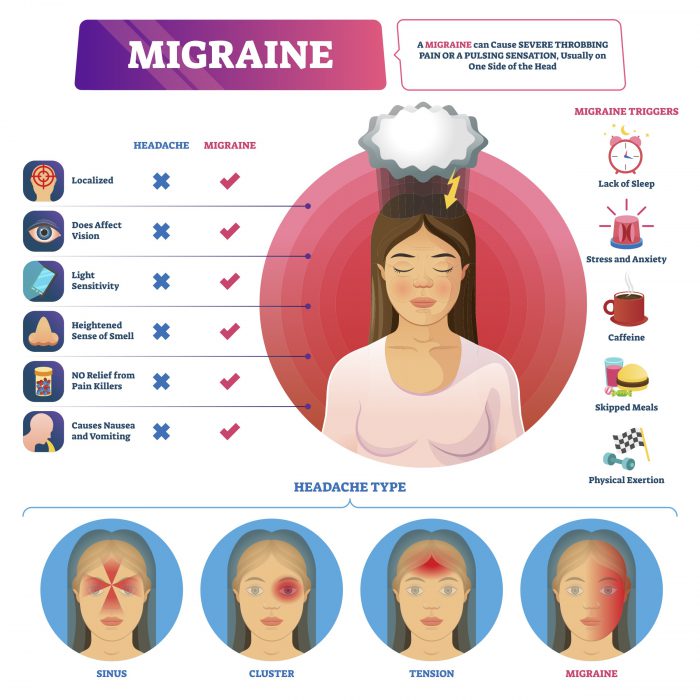
Migraines, as sufferers know, is a debilitating illness that can cause regular ‘wipe out’ for those that have it really badly and find the only way to get any slight relief is to try to sleep, in the darkness for several hours. It is very debilitating, so much so that it has been declared to be a ‘debilitating illness’ by the NHS, which affects those between the age of 15 and 59 as a general rule. 10 million people are affected, so the Office of National Statistics reports.
There is no specific cure, as doctors and experts in the field have been puzzled by it for many years. The cost to the NHS is high, let alone the resources needed for those who are actually admitted to hospital. Businesses also suffer, and with around 3 million ‘working days lost due to sickness’ every year – this number has significantly increased over the last 5 years.
Headaches and migraine should never be confused, and sufferers know that better than anyone. Severe headache should never be called a migraine, which people tend to do when they really don’t know the difference.
Headaches are unpleasant pains in your head that can cause pressure and aching. The pain can range from mild to severe, and they usually occur on both sides of your head. Some specific areas where headaches can occur include the forehead, temples, and back of the neck. A headache can last anywhere from 30 minutes to a week. According to the NHS, the most common headache type is a tension headache. This can be caused by many factors, including stress, muscle strain, and anxiety.
There are problems for the inexperienced sufferer, discerning exactly what migraine they have, as there are many different types:
There are two other headaches which can be easily confused with migraine, called ‘cluster headaches’ and ‘cervicogenic’ headaches’. Even though these are not migraines, they can be equally as painful and also last up to a week. Treatment for these will often vary between specialists.

As you can see, this can be difficult, not just for patients but for specialists as well. Pain can occur in different places at difference times and sometimes difficult to work out which type is applicable to the patient.
Different for most people but can initially be recognised as something you may not normally have.
If patients experience these symptoms it could be migraine and would need to be investigated at first by your GP who may refer you to a specialist.
If potential sufferers have migraine, you may have certain feelings prior to it kicking in; such as sensitivity to light, things tasting differently, tingling in hands, flashes of light in the eyes, and a general feeling of ‘not quite being here’. These situations are called ‘aura’ migraines, where you know in advance that there is one coming on. These are quite useful, as you can start treatment before it really is painful.
Interestingly, women experience migraine more than men, usually associated with hormonal activity or menstruation.
There are other reasons for anyone to experience migraine, such as poor diet, or family history.
Each type of migraine may require different types of medication or other methods of relaxation as well. If you experience ‘aura’, this means you can get ahead of the migraine, which is very helpful to frequent sufferers.
Don’t despair, there is treatment out there, so keep trying to ease the burden.
Tags: heachache, hemiplegic, migraine, tension